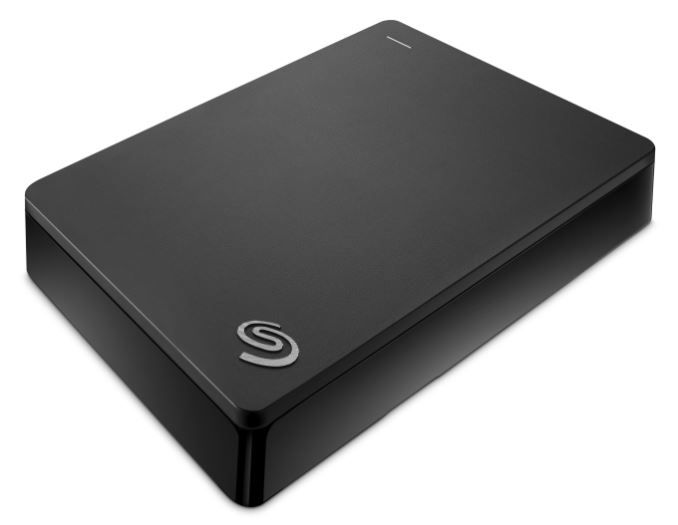Seagate Backup Plus Portable 4TB USB 3.0 Drive Review
by Ganesh T S on August 4, 2015 8:00 AM ESTMiscellaneous Aspects and Concluding Remarks
In the introductory section, we had mentioned about some value-adding features of the Backup Plus Portable drive. In order to take advantage of these features, the Seagate Dashboard app needs to be installed first. The app allows configuration of the backup sources, restoration of backups, connection to cloud services such as Dropbox / Google Drive / Nero Drive and associating the drive with those services (if applicable). The general interface and available options in the Seagate Dashboard can be seen in the video below.
The Dashboard also allows upload and download of photos / videos associated with a Facebook or Flickr account. In terms of other features, the free 200GB on OneDrive is available only after the product is registered (launching the registration through the setup program in the drive automatically populates the necessary serial number field). Lyve is yet another standalone application that can be used to back up photos and videos to the drive as well as the cloud. The download link is again provided on the page launched by the setup program in the drive. Seagate also provides Paragon drivers for Windows and Mac OS - allowing the former to read and write HFS+ drives and the latter to read and write NTFS drives.
Coming to the business end of the review, we need to discuss the pricing. The 4TB Backup Plus Portable was launched with a MSRP of $240, but the street price for the STDR4000100 seems to be closer to $200. The performance of the disk is what one would expect from a traditional PMR (perpendicular magnetic recording) drive. Our DAS suite benchmark doesn't reveal any SMR (shingled magnetic recording) firmware tricks. (Update - 10/21/2016: The drive uses platters that operate partly in PMR mode and partly in SMR, along with multi-tier caching (MTC) which includes DRAM and flash - The efficiency of MTC ensures that an empty drive maintains as much consistency as a PMR drive even under heavy traffic.) Pretty much the only improvement idea that we can think of is a larger internal buffer. On the whole, at $0.05 / GB, it is one of the most cost-effective and easily portable storage media currently available for purchase. The value-added features such as the free OneDrive storage and the functional Seagate Dashboard app serve to sweeten the deal.











47 Comments
View All Comments
fjcamry - Tuesday, August 11, 2015 - link
I have a 2 TB Seagate external drive in a enclosure with holes. I can tell it's running cool while the computer is on with Seagate dashboard always on start up. I turn off the computer when done using it , maybe leaving it on Sunday for scheduled backups. I used to have a motherboard program showing how many rpms the drives all ran at. That was with another system that I built. So my question is how can I see how many rpms my external drive is without having to search for a third party monitoring program to download and install? I've searched everything I know of on my windows 10 upgrade.darkfalz - Tuesday, August 18, 2015 - link
I have some 7200 RPM 3TB Expansion Desktop drives, they ran so hot I had to put a fan on them during extended file operations. The same enclosure 4TB / 5900 RPM run much cooler.prisonerX - Tuesday, August 4, 2015 - link
It's just you. Besides the marketing boost for the latest standard, it makes no sense relying on a standard that is superseded and being phased out. As the whole industry rolls forward new parts not only support the latest standard but are also lower power, have bug fixes and other performance improvements built in. Parts for the old standard become harder to find and more expensive over time and even if your product has a normal life cycle it's possible that the older part may no longer be available, which would immediately kill a possibly successful product.ddriver - Tuesday, August 4, 2015 - link
It might still be beneficial when transferring data that would fit in the HDD cacheCharonPDX - Tuesday, August 4, 2015 - link
Because most chipsets are now SATA3. Why bother creating a SATA2 chipset, or using an old, likely discontinued SATA2 chipset, when a SATA3 chispet is readily available and cheap?Daniel Egger - Tuesday, August 4, 2015 - link
I'm actually surprised that they still do SATA and add a SATA<->USB bridge. I recently bought a Toshiba drive (actually with the purpose to rip the case apart and use the SATA drive internally as backup) to find out that Toshiba got rid of SATA altogether and packed USB 3.0 directly on the drives mainboard.darkfalz - Tuesday, August 18, 2015 - link
I'm sure the few cents they save on the bridge chip would be lost having two separate PCB manufacturing runs.Cptn_Slo - Tuesday, August 4, 2015 - link
I think since USB 3 came out well after the wide adoption of SATA 3 no one has bothered to design a sata 2 to usb 3.0 interface.since there is a noticeable difference between usb 2 and 3 everyone just stuck with sata 3.
also sata 3 is probably cheaper on the drive side.
to do a sata 2 drive is a lot of work on the manufacturing side with 0 benefits.
hlmcompany - Tuesday, August 4, 2015 - link
USB 3.0 provides more power to the device. For these portable devices, it isn't just about data transfer speed, it's also about being sure the device has enough power. Of course this is host dependent. So, if the host is USB 2.0, power can still be an issue and a dual Type-A connector may be needed.Guspaz - Tuesday, August 4, 2015 - link
How can you not tear that sucker open? We must see the drive inside!